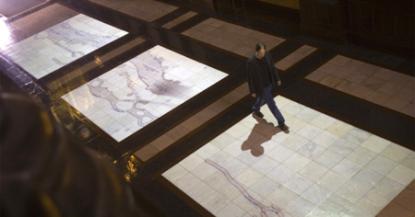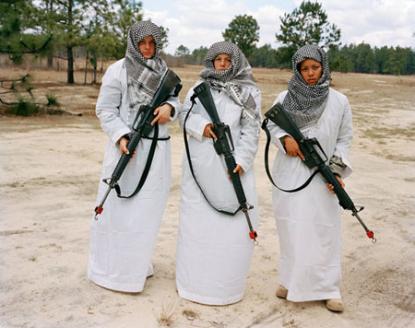A partnership between the state cultural agency (MCC) and the state humanities organization (Mass Humanities) on a literary event is kind of a no-brainer, literature being one of the “bigees” in the humanities gang. Even so, when not thinking about it too clearly (a favorite pastime of mine), I’ll sometimes divide the humanities and the arts by some notion of where they take place. Humanities happen in lecture halls, academic offices, anthropological surveys, and art happens in studios, performance spaces, limestone Key West houses overrun with cats. But really, it’s a false division, and the borders between the two (if there are any) are pretty hard to identify.
Or maybe it’s better to put it this way: when the two intersect, it makes for fascinating experiences.
I’m not just talking about historical novels, or documentary films (but those, too). I’m thinking about art that does what the humanities do: “make(s) sense of the human experience in general and our individual experiences in particular” (to quote the website of my illustrious host).
Take the installation Deep Wounds by innovative new media artist Brian Knep.


(IMAGES: Stills from Brian Knep’s installation DEEP WOUNDS (2006), Photos by Kris Snibbe)
The 2006 interactive piece was installed at Harvard University’s Memorial Hall, a space that honors the Harvard graduates who died fighting for the Union in the Civil War. Imagine yourself walking past the names of the honored soldiers inscribed on building’s walls, toward sections of marble floor lit up with a luminous glow. As you walk across the floor, sections of the luminous film open up, revealing descriptions of Harvard graduates who fought and died for the Confederacy, but they’re described by relationships – father, brother, friend – rather than by name. (The work is no longer at Memorial Hall, but you can watch a short video on the installation on Knep’s website and read a review in Art New England.
As a work of art, the piece is wonderful–probing and provocative, visually stirring, technically innovative. But it’s no less an inquiry into a segment of history, into philosophies about war and what we choose to remember, into questions that would be perfectly suited for any number of humanities disciplines.
Similarly, Claire Beckett’s photographs of soldiers in basic training or in preparation for the ground realities of Iraq operate beautifully as pure portraits. Take this photograph:

(IMAGE: Claire Beckett, PVTS KENDRA DUFFY, ALLISON BRONNER & JESSICA-ANN LAYUG, 2006 (2006), c-print, 30 in x 40 in.)
So many intriguing suggestions here–the Iraqi garb incongruously set on the Western soldiers, bravery, vulnerability (maybe even a hint of boredom) in the face of the unknown. But the photo contains a full array of humanities, too–touching history, anthropology, politics, philosophy, social science. By nature, works like Beckett’s and Knep’s stir us with questions rather than answer them. They drive us right into the arms of the humanities!
I started this post talking about a literary reading, so I thought I’d end with a poem. It’s by Ben Berman, a Boston poet who has incorporated his experiences as a Peace Corps volunteer into some of his work. I chose it because in its approach to “human experience in general and our individual experiences in particular,” it’s most definitely an attempt to make sense.
Moving On
Every six months or so, Edwin writes
me a letter, lets me know who’s passed
on and the latest cost of bread. This time
it’s Benson, his younger brother Lovewell
and sixty-thousand dollars. I am next
to nothing for money, he writes, and still
without work. But Brother, the Pentecostal
Church has arrived. They’re teaching us the right
way to pray. It’s biblical – the disconnects
and catalogues, destruction juxtaposed
next to the austere and casual.
Procrastination is the thief of time,
Edwin writes, and it has been high time
since you wrote back. Brother, are you still
alive? If so, send money for goats as well
as for beer – the bill of burial rites.
Too often these days, I think of my past
as a currency – rubbery chicken necks
and children named Godknows, boys who die next
to you on busses – I spend all my time
distancing myself, plundering my past
for sibylline truths and forget it’s still
alive. Edwin’s waiting for me to write
him back. He needs help paying for Lovewell’s
funeral. Back home, Edwin, all is well.
Here is twenty dollars. I’ll send more next
letter – it sounds so easy to write.
But time wastes us, William Matthews writes, and time
saves us and buys us. All we can do is steal
back from what squanders us, swirl the past
into the present, learn to trespass
even as we go light. Our rituals
grow rote, otherwise, prescribed and stale,
the mere expectations of what comes next.
It’s dawn. I’ve stolen away. It’s time
to let go and hold on, it’s time to write
back. Please, Edwin writes, we need help. Lovewell
and Benson have passed away. I am next…
Angels, thieves of time, prepare to wrestle.
Ben Berman 2006
There. That’s the intersection. Right there. Because what else is a work of art or humanities if not a bit of wrestling with the thieves of time?
The MCC is proud to partner with Mass Humanities to present a reading of literary fellows and finalists from our Artist Fellowship Program, on Wednesday, February 25, 7 PM, at the Forbes Library in Northampton, part of MCC’s statewide Commonwealth Reading Series.
Images: Two stills from Brian Knep’s DEEP WOUNDS, 2006, three-channel interactive video installation, 45 ft x11 ft, computers, video projectors, video cameras, custom software, photographs by Kris Snibbe; Claire Beckett, PVTS KENDRA DUFFY, ALLISON BRONNER & JESSICA-ANN LAYUG, 2006 (2006), c-print, 30 in x 40 in.


